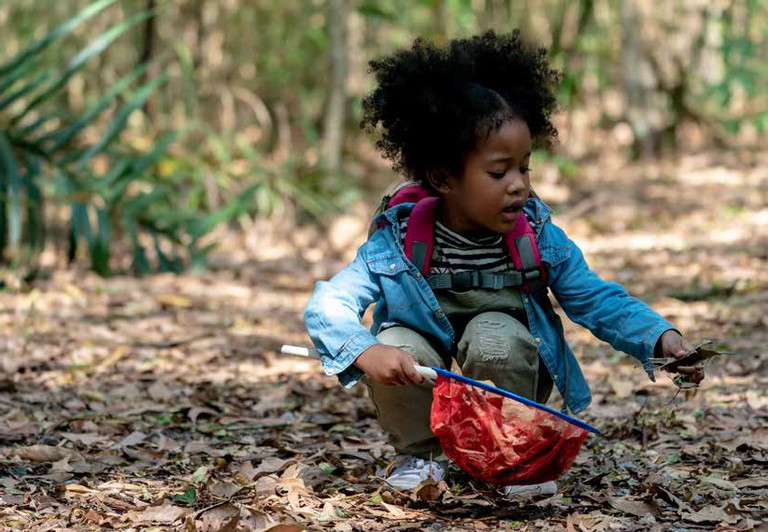COMMENT

Sensory play or sensory pay?
Melanie Pilcher, quality and standards manager at the Alliance, explains why free and natural resources offer greater sensory play experiences for children
Melanie is responsible for resources that support best practice in all matters relating to the EYFS.
I was recently looking for some photographs to illustrate sensory play. This term, as we all know, describes any play that stimulates at least one of the senses – including touch, taste, sight, hearing or smell. It could also include any play that involves movement and balance.
A quick Google search flagged up hundreds of images which initially looked promising. However, closer inspection left me struggling to find any examples that did not include plastic or something else artificial. There were lots of adverts for plastic play mats for babies, filled with coloured fluid and sparkly bits – which all looked very enticing – and were very expensive. But these were all limited in terms of what they offer children’s senses.
Back to basics
I have observed many young children doing so called ‘play’ on these mats. I have always thought that their interest is fleeting because they soon become frustrated by not being able to access the enticing contents. Most self-respecting babies quickly loose interest in them. Plastic has no texture, smell, or taste. So while it may be pleasing visually, and make some stimulating sounds, it offers them little possibility for further exploration.
It is so much more meaningful to sit babies on a lawn where they can smell the grass, feel the texture, hear the scrunching of leaves and yes, maybe even have a quick nibble before an adult intervenes! There is not a sensory mat that can be bought, at any price, that offers children so much. Grass changes constantly and has many hidden extras just waiting to be discovered, creepy crawlies, spider webs and mud. Not only does it stimulate every sense, but it also ignites the essential characteristics of effective learning too.
At a recent education and childcare exhibition, I saw a stand selling “handmade realistic sticks” designed to give children a sensory experience – at least it was a natural material, but I challenge any early years educator to tell me that they could not source a stick for free themselves!
Meaningful experiences
It applies equally to adults too – we need meaningful sensory experiences for our mental health and wellbeing. For example, going to the gym and spending 30 minutes on the treadmill running or, in my case, walking fast is better than sitting on the sofa and it does release some good endorphins.
But doesn’t the repetitive drumming of feet on a rubber mat and the sound of the treadmill quickly make the good feeling disappear though? It cannot compare to walking or running outdoors, where nature throws every possible sensation at you. Plus getting outside is much kinder to your purse.
The same applies to plastic house plants in pots. Why not grow some herbs instead? Not only will this save the planet from some of the scourge of plastic, but you will also save money and surround yourself with a sensory delight. Sensory experience is not a product you can purchase – it’s a feeling!